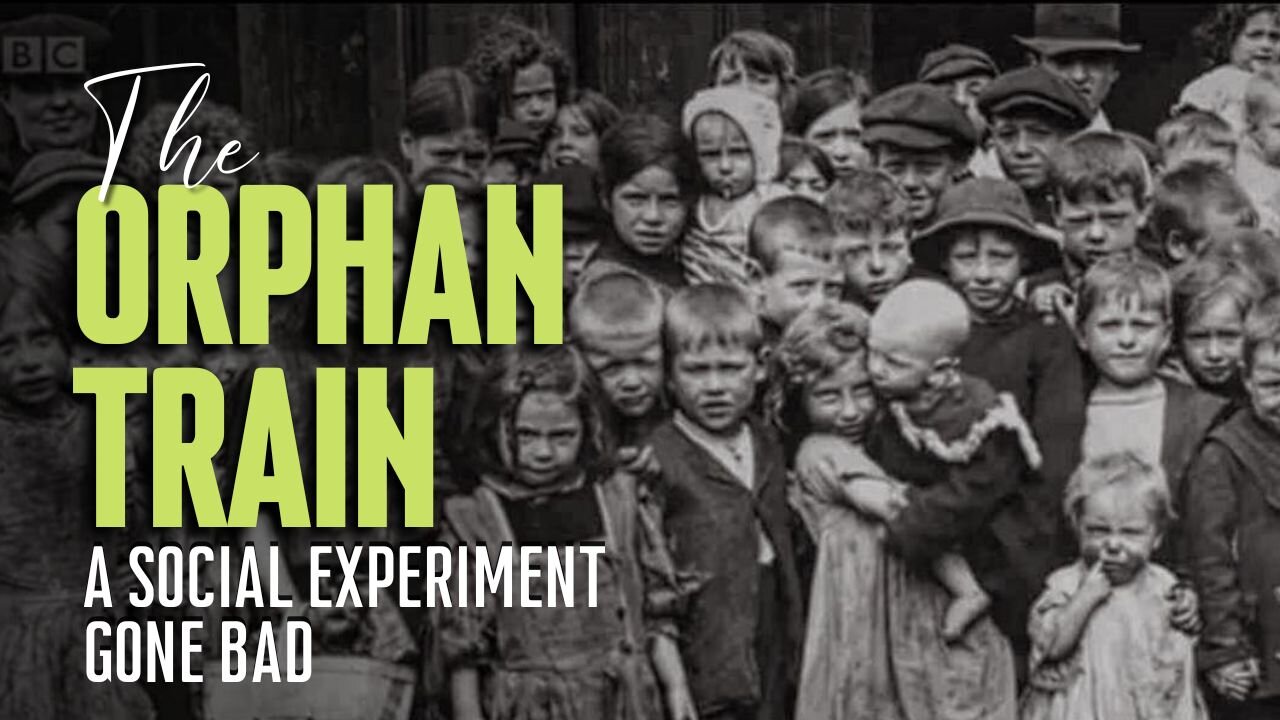Premium Only Content

The Orphan Train-a Social Experiment Gone Bad
Between 1854 and 1929 the United States was engaged in an ambitious, and ultimately controversial, social experiment to rescue poor and homeless children, the Orphan Train Movement. The Orphan Trains operated prior to the federal government’s involvement in child protection and child welfare. While they operated, Orphan Trains moved approximately 200,000 children from cities like New York and Boston to the American West to be adopted. Many of these children were placed with parents who loved and cared for them; however others always felt out of place and some were even mistreated.
-
Trying to get children off the streets
-
During the 1850s there were thousands of children living on the streets of several major cities. The children were in search of food, shelter, and money and sold rags, matches, and newspapers just to survive. The children formed gangs for protection because life on the street was dangerous and they were regularly victimized. The police often arrested the children, some as young as five years old, and put them in lock up facilities with adult criminals. Determined to remedy the situation, the Children’s Aid Society and the New York Foundling Hospital devised a program to take children off of the streets of New York and Boston and place them in homes in the American West rather than allow them to continue to be arrested and taken advantage of on the streets. Because the children were transported by train to their new homes, the term “orphan trains” began being used.
-
-
![The Man In The Red Cap Ushers In The Purification | Hopi Prophecy [Timestamp 16:35]](https://1a-1791.com/video/s8/1/E/k/O/v/EkOvv.0kob-small-The-Man-In-The-Red-Cap-Ushe.jpg) 26:46
26:46
The Aquarius Bus
10 days agoThe Man In The Red Cap Ushers In The Purification | Hopi Prophecy [Timestamp 16:35]
7425 -
 LIVE
LIVE
Jeff Ahern
55 minutes agoNever Woke Wednesday with Jeff Ahern( Leftists losing everywhere)
232 watching -
 9:04
9:04
GBGunsRumble
12 hours agoGBGuns Armory Ep 134 Walther PDP F Pro
15.1K1 -
 13:12
13:12
Melonie Mac
20 hours agoAspyr Teases Possible New Tomb Raider Games in Classic Remastered Style
11.1K7 -
 44:49
44:49
Chrissy Clark
14 hours agoThe Rise Of Female Shooters, ABC News’ $16M Settlement, & MORE I Underreported Stories
9.17K4 -
 2:49:13
2:49:13
InfiniteWaters(DivingDeep)
22 hours agoIt's Over - The Matrix Is Cooked | Infinite Waters
6.54K8 -
 15:49
15:49
Chris From The 740
1 day ago $2.57 earnedThe EAA Girsan Influencer X - Not Your Grandpa's 1911
19K2 -
 25:38
25:38
Producer Michael
17 hours agoLuxury Souq's MULTI-MILLION DOLLAR Watch Collection!
80.1K5 -
 17:06
17:06
Sleep is CANCELED
22 hours ago10 SCARY Videos To Keep You Up All Night!
51.9K2 -
 2:37
2:37
Canadian Crooner
1 year agoPat Coolen | Let It Snow!
33.2K9